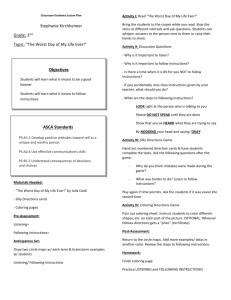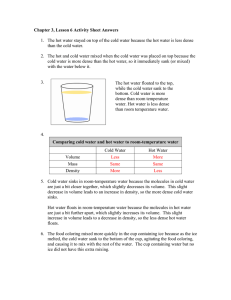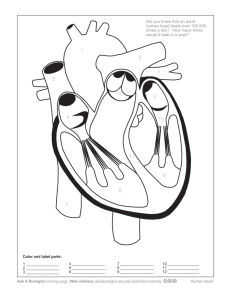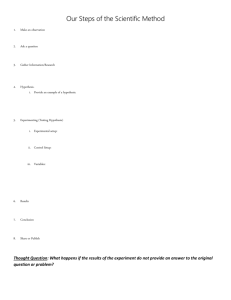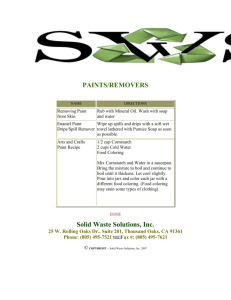WS 1.4: Describing Water Movement: Currents:
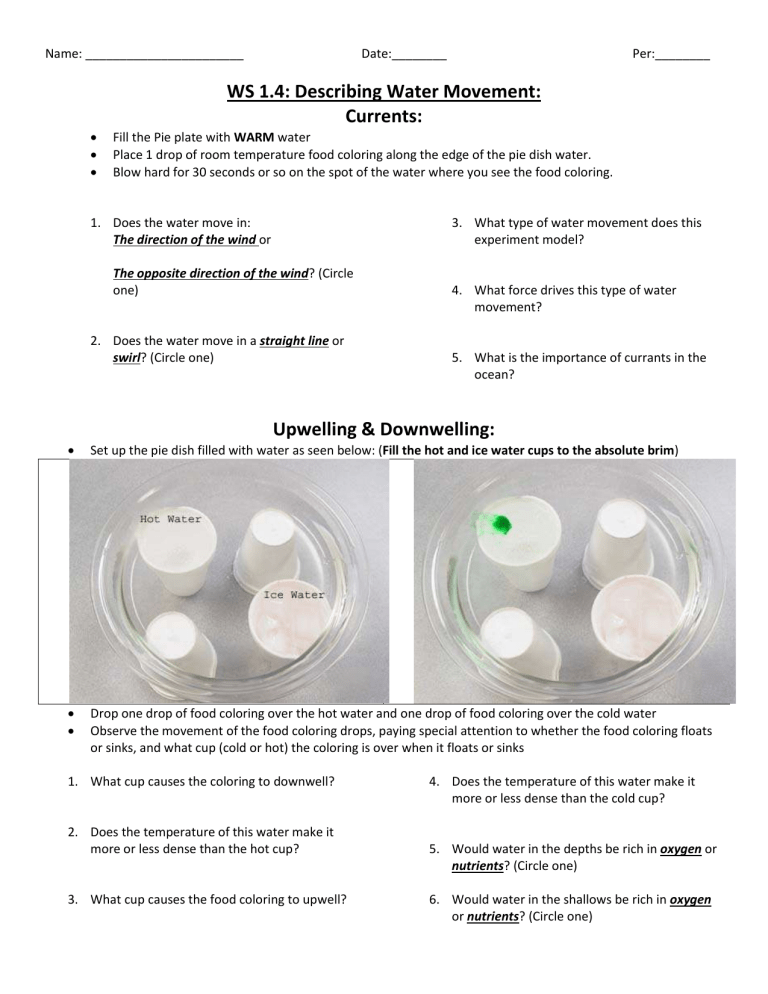
Name: _______________________ Date:________
WS 1.4: Describing Water Movement:
Per:________
Currents:
Fill the Pie plate with WARM water
Place 1 drop of room temperature food coloring along the edge of the pie dish water.
Blow hard for 30 seconds or so on the spot of the water where you see the food coloring.
1.
Does the water move in:
The direction of the wind or
3.
What type of water movement does this experiment model?
The opposite direction of the wind? (Circle one)
2.
Does the water move in a straight line or
swirl? (Circle one)
4.
What force drives this type of water movement?
5.
What is the importance of currants in the ocean?
Upwelling & Downwelling:
Set up the pie dish filled with water as seen below: (Fill the hot and ice water cups to the absolute brim)
Drop one drop of food coloring over the hot water and one drop of food coloring over the cold water
Observe the movement of the food coloring drops, paying special attention to whether the food coloring floats or sinks, and what cup (cold or hot) the coloring is over when it floats or sinks
1.
What cup causes the coloring to downwell? 4.
Does the temperature of this water make it more or less dense than the cold cup?
2.
Does the temperature of this water make it more or less dense than the hot cup? 5.
Would water in the depths be rich in oxygen or
nutrients? (Circle one)
3.
What cup causes the food coloring to upwell? 6.
Would water in the shallows be rich in oxygen or nutrients? (Circle one)
Water Salinity & Density
7.
On the diagram below identify which layer of water is salt water and which is fresh water:
8.
Is salty water
more
or
less
dense than fresh water? (Circle One)
9.
Using your observations from the hot and cold water as well as the water bottles above Explain how upwelling and downwelling circulate oxygen and nutrients around the ocean:
Water cooled at the poles is (
MORE
or
LESS
) dense and (
SINKS
or
FLOATS
), bringing
(
OXYGEN
or
NUTRIENTS
) down to the depths. The water then circulates to the equator where it is warmed. The warmed water is (
MORE
or
LESS
) dense and (
SINKS
or
FLOATS
), bringing (
OXYGEN
or
NUTRIENTS
) up to the surface.
